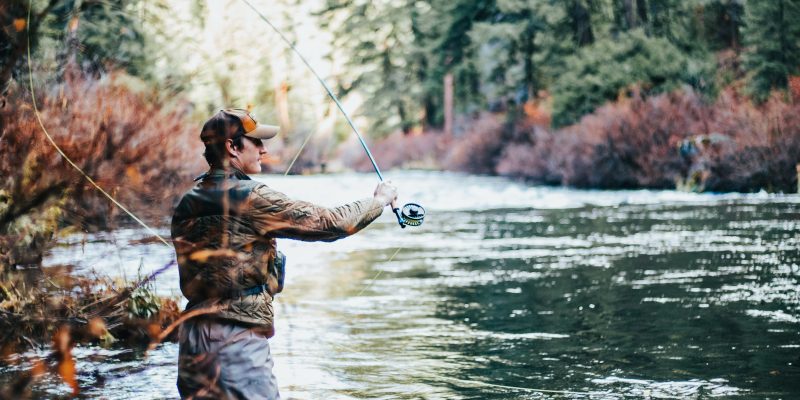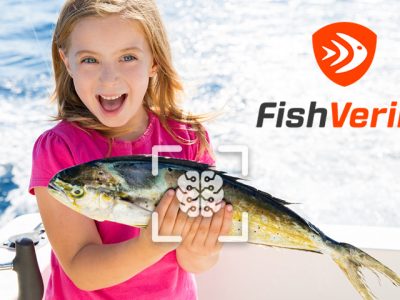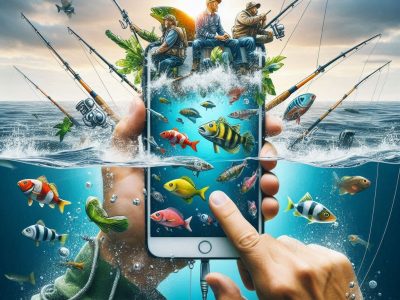Whether you’re driving a vehicle, RV, boat, or traveling across the country, preparing a fishing excursion can be an exciting way to have new adventures and a great way to spend time with friends and family. So, here are some pointers to help you get ready for a fun trip filled with fish and no stress.
1. Pick your location
Pick a destination that is going to be enjoyed by everyone going on the trip. For a successful adventure, you should have several options in mind before making a final decision. Consider criteria like the weather, the distance and time it takes to get there, what kind of fish you’ll find, and your budget. Search for the best places to fish in your area and find a spot that will accommodate your skill level and desired fishing experience. Most of all, make sure you know the regulations for fishing in the area you’re going fishing.
Quick tip: If budget allows, we recommend chartering and booking a trip to a new area with a local charter boat captain. They provide the tackle and the bait and increase your chances of catching fish. If going alone then make sure once you decide on a spot, mark it on a map or enter it into your GPS.
2. Do your research
Once you’ve picked a destination, it’s time for some in-depth research. Google for recent fishing reports and make a couple of calls to local fishing bait or tackle shops to gain some local knowledge. This also means reading up on fishing regulations and licensing requirements specific to your destination, as well as learning about the area’s geography, climate, and wildlife. The more you know about the place before your trip, the better prepared you’ll be.
Consider looking up information on what kind of fish live in that specific body of water, where they are located, and their habits (what they eat when they migrate).
Quick tip: You can find this type of data by visiting online fishing forums, state and provincial fish and wildlife agencies, or by talking to local bait-and-tackle shops. They will likely have the most up-to-date information on the area’s fisheries.
3. Check timing and condition
Fishing seasons are another important factor. Depending on the species you’re fishing for you need to understand their migration patterns if any are in play.
We’re a big believer in fishing according to the conditions, which means we prefer factors such as weather and season to determine where to fish rather than just picking a spot. Most people don’t have the luxury of selecting the best days or times to fish, so it’s best to fish to the conditions as per your available dates as much as possible.
The seasons are influenced by the weather, and it’s critical to research which species are biting using your knowledge, local tackle shops, internet forums, and knowledgeable friends.
Depending on where you live, certain places will have better fishing for certain species than others during specific times of the year. For example, in Florida, the best time to catch sailfish is after cold fronts pass-thru and the best dates are from Jan to April. In Texas, May through October is prime fishing time for several species, including Tarpon and speckled trout. Snook to name just a few with other species, like Redfish are usually found year-round. The last thing you want to do is spend weeks planning and preparing for a trip, just to find out the fish aren’t biting where you’re going.
Quick tip: general weather conditions (past/present/forecast), wind and rain forecasts, any tides, surf height if surf fishing, water temperatures, and the given season are the conditions to keep in mind when planning a fishing trip.
4. Plan your route
The next step is to plan your route. Decide what mode of transportation you will be using and map out the stops you will need to make along the way. If you are traveling by boat, make sure you have a good idea of where the marinas or public launches are located. If you’re traveling by plane or car, look for hotels and motels that are close to your planned fishing spots.
You will also want to plan out where you will be stopping for food and gas. This is especially important if you’re driving a long distance or boating in remote areas.
Quick tip: Always file a float plan and let someone know your plans. Safety should always be top of mind. Personal essentials that you might want to keep on hand during the entire trip: a map, compass, binoculars, first-aid kit, insect repellent, snacks, water, sunglasses, hat, and sunscreen.
5. Gather the correct equipment
If you are going on a fishing trip, having the appropriate equipment is a must. If you forget some equipment and realize it in the middle of the water, it can be troublesome and ruin your whole trip. Before leaving the house, one helpful tip is to take along the right equipment, don’t overpack, and make a checklist on your phone that you can use as a last-minute review.
Rods and reels with all necessary tackle and bait should be in suitable containers. Have some extra tackle and rods on hand in case something goes wrong. Make sure you either have artificial or frozen bait ready to go, or have a plan to catch your own bait if you don’t. If you’re going to be gone for a long time, or if you’ll be fishing from a boat, having a portable freezer or coolers can be a really useful tool for preserving and storing quality meals.
Quick tip: Make sure your permit/license is secure and away from water damage, and if there are any additional stamps you might need depending on the location.
Most importantly, having a fun time on the water is meant to be enjoyable, and being prepared can provide a lifetime of great memories. Now that you’re armed with some basic planning tips, it’s time to get started on your fishing adventure.
Have fun and good luck on the water!



3 Comments
Daniel Rainey
July 6, 2022 at 11:53 pm -Thanks
Daniel Rainey
July 6, 2022 at 11:54 pm -Thanks. Good tips.
admin
July 8, 2022 at 2:18 am -Thank YOU, Daniel! Good luck on your fishing trip 😊